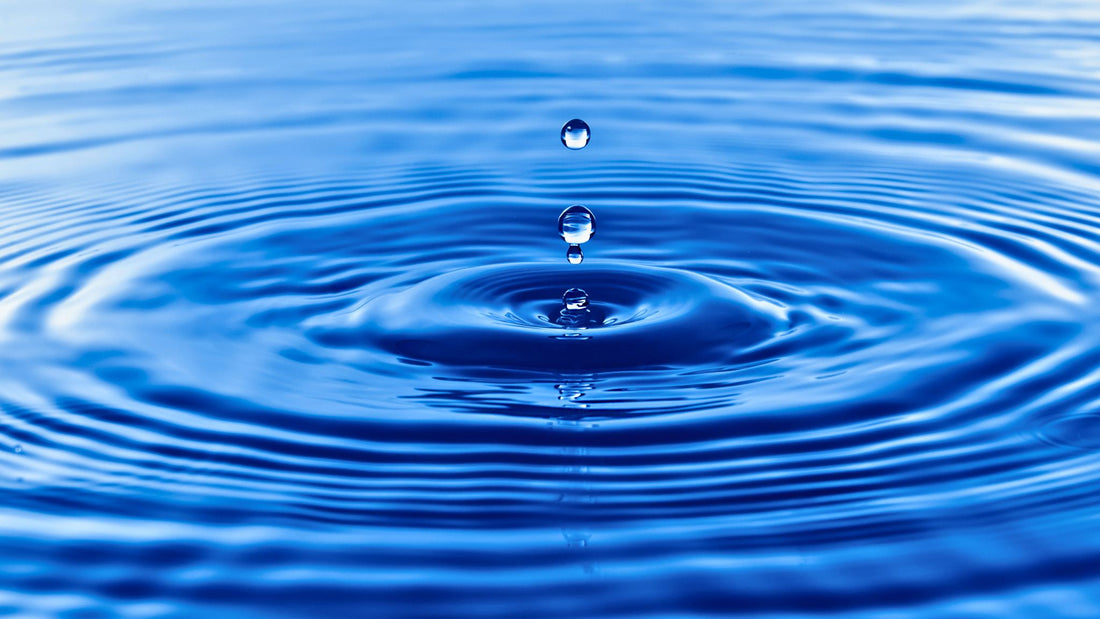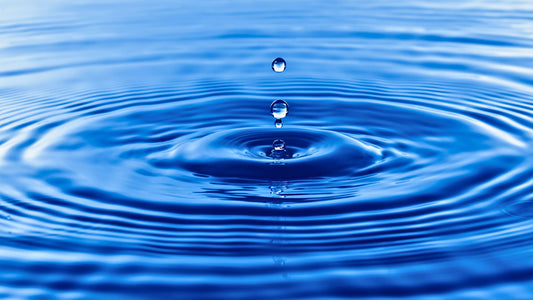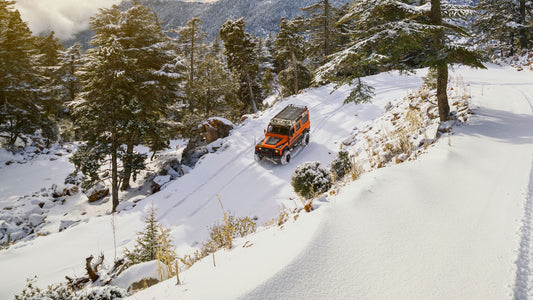ENSURING SAFE DRINKING WATER ON YOUR OVERLANDING ADVENTURES
Picture this: You're deep in the heart of the wilderness, surrounded by nature's beauty, far away from the hustle and bustle of city life. The open road stretches before you, leading to uncharted territories, breathtaking vistas, and unforgettable experiences. This is the essence of overlanding – a journey that promises freedom, exploration, and self-discovery.
However, amidst all the excitement and adventure, there's one fundamental aspect you should never overlook: ensuring your drinking water is safe. When you're far from civilization, reliable access to clean water becomes a vital lifeline, and neglecting it can turn your dream expedition into a nightmare.

In this guide, we'll dive deep into the world of portable water purification systems for overlanding. We'll explore the various contaminants that can lurk in even the most pristine-looking water sources. We'll discuss the techniques, tools, and strategies you can employ to turn that crystal-clear mountain stream or hidden desert oasis into a source of refreshment and sustenance, free from harmful microorganisms and other waterborne threats.
So, whether you're a seasoned overlander looking to refine your water treatment skills or a novice planning your very first off-grid adventure, join us on this journey to discover the art and science of ensuring safe drinking water while overlanding. After all, in the wild, being prepared isn't just a choice; it's a necessity for a successful and enjoyable expedition.
FILTRATION VS. PURIFICATION: NAVIGATING THE WATERS
As an overlanding enthusiast, you're well aware that access to safe drinking water isn't always guaranteed when you're exploring remote terrain. To ensure your hydration source doesn't become a health hazard, it's crucial to understand the key methods for making water safe to drink: filtration and purification. Each approach has its unique advantages and limitations, and knowing when and how to use them can be a game-changer for your overland journey.
FILTRATION: THE SIEVE OF SAFETY

Filtration relies on physical barriers to strain out contaminants from the water, making it one of the most commonly used methods in outdoor settings. Filtration systems employ porous materials like activated carbon to trap particles, bacteria, and protozoa, ensuring your water is free from these microorganisms.
WHAT FILTRATION REMOVES

- Particulate Matter: Filtration excels at removing visible particles like sediment, dirt, and debris, which can cloud your water and affect its taste.
- Bacteria and Protozoa: It effectively blocks out larger microorganisms like E. coli, Salmonella, Giardia, and Cryptosporidium, safeguarding you from waterborne illnesses.
PROS OF FILTRATION
- Easy to Use: Filtration systems are generally user-friendly, requiring minimal setup and maintenance.
- No Chemicals: Filtration is a chemical-free method, making it suitable for those who prefer natural water treatment.
- Improves Taste: By removing impurities, filtration often enhances the taste and clarity of water.
CONS OF FILTRATION
- Not Effective Against Viruses: Filtration alone may not protect you from tiny viral contaminants like hepatitis A. Viruses can slip through the pores of most filters.
- Maintenance Required: Filters can clog over time, reducing their effectiveness. Regular cleaning or replacement is necessary.
PURIFICATION: YOUR SHIELD AGAINST WATERBORNE THREATS
Purification is your ultimate safeguard against a wide spectrum of contaminants. This method steps beyond mere filtration, targeting not only bacteria and protozoa but also those elusive viruses and chemical impurities that could lurk in your water source. Let's delve into the world of water purification, including traditional and modern techniques.
BOILING WATER: THE TIME-TESTED PURIFIER

Boiling water is an age-old method of purification, trusted by generations for its simplicity and effectiveness. The process is straightforward: Bring your water to a rolling boil for at least one minute (or three minutes at higher altitudes), and you've neutralized harmful microorganisms, including bacteria, viruses, and protozoa.
PROS OF BOILING
- Reliable: Boiling is a tried-and-true method, with a long history of keeping explorers safe from waterborne illnesses.
- No Chemicals: It requires no additional substances, making it a chemical-free choice.
- Taste Neutral: Boiling doesn't alter the taste of water or leave any chemical residues.
CONS OF BOILING
- Time and Fuel: It demands a heat source, such as a camp stove, and consumes time and fuel.
- Not Ideal for Minimalist Setups: Boiling may not suit those aiming for ultra-light or minimalist overlanding due to equipment requirements.
ULTRAVIOLET (UV) WATER PURIFICATION: A HIGH-TECH SOLUTION

In the realm of modern purification methods, UV water purification stands out as a high-tech solution. UV purifiers use ultraviolet light to disrupt the DNA of microorganisms, rendering them incapable of reproducing or causing infections.
PROS OF UV WATER PURIFICATION
- Effective Against a Wide Range: UV purifiers tackle bacteria, viruses, and protozoa effectively, ensuring comprehensive protection.
- Fast and Efficient: The process is quick, often taking less than a minute to treat a liter of water.
- No Chemical Taste: UV treatment leaves no chemical taste, preserving the natural flavor of your water.
CONS OF UV WATER PURIFICATION
- Battery Dependence: UV purifiers rely on batteries or power sources, which can be a drawback in remote areas.
- Doesn't Remove Particulates: UV treatment won't eliminate particulate matter or chemical pollutants.
CHEMICAL TREATMENT: PORTABLE AND PRACTICAL

For the pragmatic overlander, chemical treatment offers a lightweight and portable purification solution. Common chemicals used include chlorine dioxide or iodine tablets, which are readily available and easy to use. These chemicals effectively kill bacteria, viruses, and protozoa.
PROS OF CHEMICAL TREATMENT
- Compact and Lightweight: Chemical treatment is exceptionally portable and ideal for minimalist overlanding setups.
- Long Shelf Life: Tablets or drops have a lengthy shelf life, making them dependable backup options.
- Effective Against Viruses: Chemical treatments provide a defense against viruses that may elude other methods.
CONS OF CHEMICAL TREATMENT
- Taste and Odor: Some individuals find chemically treated water has an unpleasant taste or odor.
- Contact Time Required: Effective treatment often requires waiting for a specified contact time, which can be less convenient than instant methods.
THE ULTIMATE WATER TREATMENT: COMBINING FILTRATION AND PURIFICATION

While both filtration and purification are potent tools in your water treatment arsenal, combining them can create a robust defense against even the most challenging water sources. This two-pronged approach ensures you not only quench your thirst but also safeguard your health comprehensively.
HOW FILTRATION AND PURIFICATION WORK TOGETHER
- Filtration First: Start by using a high-quality water filter. This initial step removes physical impurities, including sediment, debris, and larger microorganisms, down to a specified micron size. By doing so, you not only enhance the taste and clarity of your water but also reduce the load on your purification method. This prolongs the life of your purifier and ensures it operates optimally.
- Purification as the Final Barrier: After filtration, purify the water to target the remaining microscopic threats: bacteria, viruses, and protozoa. As purifiers are specifically designed to address these pathogens, your water receives a final layer of protection, leaving you with water that's not just clean but safe to drink.
THE ADVANTAGES OF THIS DUAL APPROACH
- Comprehensive Contaminant Removal: By employing both methods, you effectively remove a broader spectrum of contaminants, leaving little to chance. Filtration handles particulate matter, while purification takes care of the microorganisms.
- Improved Longevity: Filtration serves as a pre-filter for your purification system. This means that your purification method won't clog as quickly with sediment and particulates, extending its lifespan and effectiveness.
- Taste and Clarity: Filtration greatly enhances the taste and clarity of your water, ensuring that it's not only pathogen-free but also refreshing to drink.
CONCLUSION

In the adventurous world of overlanding, where the journey often leads us far off the beaten path, the importance of safe and clean drinking water cannot be overstated. We've explored the various methods and tools for water treatment, from filtration to purification, and even the power of combining both. Whether you're navigating remote trails, traversing desolate deserts, or camping in pristine wilderness, having reliable water treatment solutions is not just a convenience; it's a lifeline.
Remember, the wild can be unpredictable, and water sources aren't always as pure as they appear. By investing in the right equipment and understanding the differences between filtration and purification, you're equipping yourself with the knowledge and tools to keep you and your fellow adventurers hydrated and healthy. So, as you gear up for your next overlanding expedition, make sure to prioritize your water treatment strategy. It's the key to a safer, more enjoyable journey filled with unforgettable moments and breathtaking landscapes. Stay hydrated, stay adventurous, and stay safe out there!




